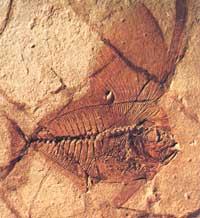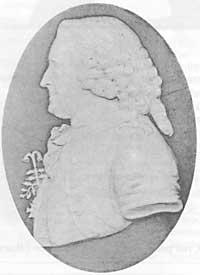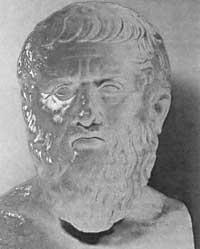Life sciences XVIII. century
1993/02/01 Bandres Unanue, Luis Iturria: Elhuyar aldizkaria
It is known that the human being has always taken care of the observation of animals and plants. However, the first thing to do when you want to convert the results obtained through these observations into science is to order them and for this it is necessary to make an appropriate classification. The old classifications of both animals and plants were based on usability and took into account some features in sight. Plants were classified as herbs, trees and shrubs. But in 1660 the scientist John Ray (1627-1705) published his first work on systematic botany. Other works will follow this work.
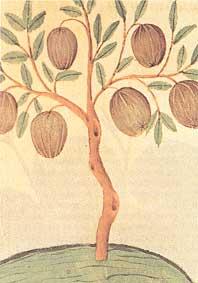
With these works, classification and morphology were much advanced. He, for the first time, separated embryos from plants as monocotyledonous and dicotyledonous, initiating a type of classification based on research of the flower, leaf, fruit, etc. Later he devoted himself to animal anatomy and also in this matter took a step forward in the sense of natural classification, differentiating plants, birds and insects. Ray made many trips and, apart from the theories of the ancients, laid the foundations of the current natural sciences based on observations.
Lineo took natural science to the point Ray left. Carl von Linné (1707-1778), son of a Swedish church pastor, created his own classification system based on the sexual organs of plants. This type of classification has been in force until the implementation of the current system.
These lines classified the stamens, male sex organ located in the center of the plants, dividing them into seven thousand plantations that I knew. Although, in the opinion of some, Lineo contributes little to a new botanist and the classification that gives his method is the same as if they were taken limestones or corollas instead of gardeners, it cannot be denied the merit of putting a new and unique methodology.
Lineo worried about human differences, that is, the different human races he observed in his travels in search of archaic plants. In his “System of Nature” he introduced man with his apes into the primate section, dividing them into four subdivisions depending on the color of the skin and its peculiarities.
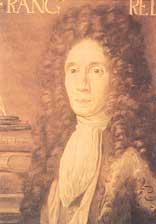
Zoology had difficulties unknown to botany to make a useful and appropriate classification. On the one hand, the internal and external structure of the organisms was very little known and, on the other hand, the number of available data was relatively low. However, knowledge continued in the 18th century. throughout the 20th century. Numerous monographs were written and numerous descriptive anatomical studies were carried out.
The ancient and medieval believed that living beings spontaneously emerged from dead matter. It was admitted that the sun's rays could cause frogs from the lion and, upon discovering the New World and seeing the difficulties to prove that American humans were born from Adam, more than one said they were also created by nature. Apparently, Francesco Redi (XVII. In the twentieth century he rose up against him. He showed that if the bodies, the bodies of the animals, were completely protected from insects, no stone appeared. It was thought that Rei's ideas were against biblical teaching and in that sense he had to fight (XIX. In the eighteenth century the front would be totally opposite.
Thus, while Vogt, Haeckel and other materialists defended the spontaneous becoming, thinking that thus the birth of life was expressed in a naturalistic way, orthodox theologians applauded negative results in considering that life was a witness to the need for direct participation of God). XVIII. In the eighteenth century the priest Spallanzani (1729-1799) remakes the works of Redi, demonstrating that in a juice well cooked and protected by air no life occurs.
C.S. Stahl physiology (1660-1734) carried the attitude of the mind that the doctor of the king of Prussia used to study chemistry. In his opinion, all the changes that occur in living bodies, despite their great similarity to conventional chemical processes from the surface, were actually completely different, guided by the sensitive soul that penetrated all its parts. Stahl's sensitive soul, without any means, controlled all body processes, both chemical and non-chemical. This soul and the rational soul of Descartes were very different.
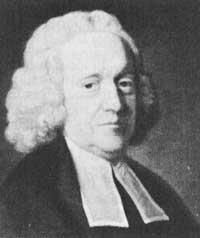
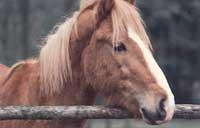
In Descartes' dualism, the human body, independent of the soul, was a machine subject to the usual laws of mechanics. According to Stahl, instead, it was not conducted by conventional physical-chemical laws, but during his life to the last point was a sensitive soul and his level was above physical-chemical forces. According to Stahl, the bridge between body and soul was movement. The sensations and the like were but forms of movement directed at the sensitive soul. Therefore, Stahl can be considered the creator of modern vitalism.
Stahl's rivals formed two schools: mechanist and chemistry. The latter gave special importance to chemical fermentation and Boerhaave collected both theories in his Institutiones Medicae (1708). With the passage of the century, and through experiments with dogs, milanos and other animals, ideas about digestion were clarified. Stephen Hales XVIII. In the first half of the 20th century he measured for the first time the blood pressure of horses, as well as that of the shroud of trees.
The year 1757 is the limit between modern physiology and all previous ones, year in which Albrecht von Haller (1708-1777) published his work Elementa Physiologiae. The physiological knowledge of each part of the body was explained systematically, clearly and accurately. He made great strides in the embryonic development of respiratory mechanics and in the research of muscle irritability.
In that century, and within the framework that concerns us, travel had a capital importance. New places, different human beings, unknown plants and animals were seen, and a desire for research was proposed, although in the world of ideas a broader vision emerged.
It is worth mentioning William Dampier (1651-1715). In his travels he saw any new tree or plant, with a sharp pen of color and image with incredible precision. His book Discours on Winds became a meteorological classic. He also dealt with hydrography and terrestrial magnetism.
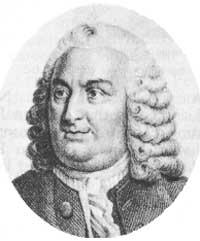
Dampier began as a pirate and continued as he could until his books got their name and prestige. But throughout the century scientific attention to research reached its peak, so society was willing to support those tasks. That's why Captain James Cook (1728-1779) was able to make things much easier. After the publication of a work on a solar eclipse by this captain, the Royal Society was commissioned to investigate Venus from Tahiti. The thrill of finding Antarctica in his later travels and, although he did not get it, his travels had results of great scientific value, such as the cause of the scurvy and many details about his treatment or about Australia, New Zealand and the Pacific.
On the other hand, and from a technical point of view, another factor to consider is the microscope. XVIII. The demand to buy these devices in the 18th century increased greatly, but not for use in laboratories, but to keep them as something strange in the rooms. Therefore, many times, instead of worrying about their optical improvements, they took care of their ornamentation. However, the passage from the simple microscope to the compound was very fast. However, for a long time the simple obtained better results than the compound and before 1730 the compound microscopes had very little space.
Through them protozoa and bacteria, sperm and various microscopic animals (spongiaries, celentereans, pneumophores, etc.) they saw them. However, in the years 1740-1750 the compounds experienced an enormous impulse that allowed them to enter the submicroscopic world.
Classification
It seems that the father of the natural classification was the almost unknown Michel Adanson (1727-1806). His works were copied and his result has not been known until very late. At first he collected all knowledge about existing plants. Then he put a parallel between artificial and natural systems. An inveterate observer, he made a detailed and complete explanation of all parts of plants, from roots to embryos.
As for his natural classification he said: “... to begin with, I make a complete explanation of each plant, putting each of its parts in different special articles with each determination; when other new species related to the exposed species appear, I put them at their side, eliminating affinities and simply pointing out differences. Due to the set of comparative explanations, plants were ordered by themselves in classes or families...”
This methodological form had great difficulties, but Adanson advanced in classification based on plant knowledge and common sense.
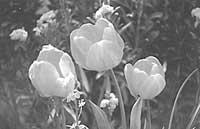
XVIII. The 20th century botany ended with the lineage of Jussieu. Five generations participated. Louis XV commissioned Bernard Jussieu to create the botanical garden of the Triano Menor. This began with the help of his nephew. He classified plants in natural order, but being more practical than theoretical, he left very little written work. His descendants gave him continuity.
This type of classification was then extended to Germany, Italy, etc. and it was a breakthrough.
In Ray's works, except insects, invertebrates were not considered. As an example, we can say that he placed the crustaceans between aptera insects (together with arachnids and myripods). Therefore, although Lineok partitioned the field of animals based on anatomical characters in six series (and in the tenth edition replaced the word of lauoine with mammalia, which would later give the series of mammals), the research of invertebrates was ruled out.
Actually, XIX. Until the nineteenth century and until the beginning of maritime laboratories it can be said that stelaiology has not meant a real advance. However, the XVIII. Throughout the 20th century, numerous research was carried out on different animals (and especially invertebrates). Several classification attempts were made, but due to technical difficulties (especially the limits of microscopes), they did not progress too much. However, due to Gmelin's work, Line's systematics was imposed.
In this area we have to raise a problem of nomenclature both in the animal and in the vegetable field. This problem dates back to antiquity, since the names used came from citizens. XVI. When 20th century botanists wanted to identify plants expressed in ancient books, they encountered insurmountable obstacles, including names issued.
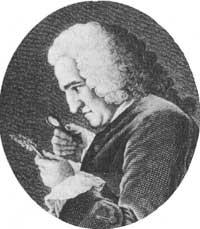
The first reform to solve this situation was its Methode pour connaitre les plantes, carried out by Tournefort, and something similar happened in the animal field, in the 18th century. When in the first third of the century appeared the History insectorum of Ray. After reviewing the genres of these lines, the nomenclator was shortened. The integration into a single species of many of the varieties considered special by their predecessors was very easy, especially in the field of zoology. Lineo is therefore the father of the modern nomenclator.
Biology
The appearance of a useful nomencler was the basis for life sciences. This was based on the systematization of biology. Thus, gradually the naturalist became a biologist.
Biology as a singular scientific field XVIII. It appeared in the 19th century. During this century, from empirical research to experimental biology, the first experiments were conducted in comparative anatomy, biology and physiology, etc. In this environment came the idea of the transformation of species, the theory of evolutionism.
XVIII. In the nineteenth century, life sciences, little by little, but continuously, opened the way to the systematization of biology; first accepting new currents of philosophical thought (which broke the old forms) and then their studies and results based on reality. But as thought was associated with reality, knowledge of physiological phenomena had to be expanded, prompting the need for experimentation. As a highlight of this environment we have to bring a name: Buffon.
D. Georges Louis Leclerc, who passed his extensive parcels to county was called Buffon, was born in 1707 in Montbard and died in 1788 in Paris. He lived as a menturist, but periodically retired to his home in Montbard where he studied mathematics, physics and botany. In 1734 he was appointed a collaborating member of the French Academy of Sciences and after five years he took the place of Bernard Jussieu. This season was dedicated to botany. Consequently, he was appointed head of “Jardin et Cabinet du Roy”.
Buffon criticized all known systems, including Lineo’s, and developed a reasoned catalogue on the species of the “Jardin et Cabinet du Roy”. Although he intended to complete fifteen numbers, the first three were published under the name of Histoire naturelle générale et particulière avec la description du Cabinet du Roy.
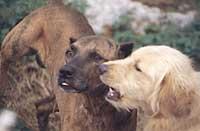
Buffon, no doubt, XVIII. He is one of the most prestigious and discussed scientists of the 20th century. His works shook the fundamental foundations of knowledge still in force. On the other hand, he pointed out new paths and rose against the natural hierarchy questioning the value of classifications and classifiers. The difficulties of classification and definition of natural species were important and Buffon, through his observation, provided the idea of a certain follow-up, as is evident in his previous book.
Buffon's nature concerns, which are frequent in his philosophical works, have a special place. As in a set of laws, XII. In the 20th century Lille dealt with a being or a force that called God a miracle. Buffon has contradictions, but his scientific research is based on the reality of a solid natural philosophy.
The classification in families, genders and classes that were known led to discontinuous mergers. Buffon shook the idea of fixism in his Histoire des animaux, for example, reasoning that he is not able to express the law of inheritance. In reviewing the concept of family, the following relationships were linked to a concept of transformism. In short, within a natural philosophy, continuity and the concept of transformism grant him the degree of Superior Biologist.
Great result of Buffon XVIII. It is about uniting the two currents that define the twentieth century: on the one hand, naturalist and, on the other, a continuous slow change of species. His theories were not accepted, but if necessary, Buffon's ideas that had their importance in that struggle were not accepted or rejected without further debate. Buffon summarizes, criticizes, complements and anticipates all the series that justify biological science.

Gai honi buruzko eduki gehiago
Elhuyarrek garatutako teknologia



